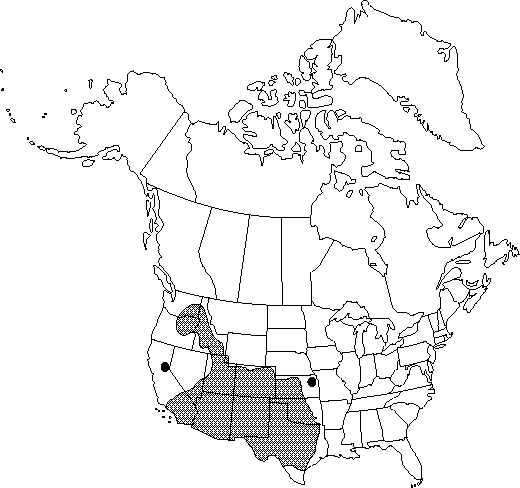Difference between revisions of "Celtis reticulata"
Ann. Lyceum Nat. Hist. New York 2: 247. 1828.
FNA>Volume Importer |
imported>Volume Importer |
||
| (One intermediate revision by the same user not shown) | |||
| Line 67: | Line 67: | ||
|publication year=1828 | |publication year=1828 | ||
|special status= | |special status= | ||
| − | |source xml=https:// | + | |source xml=https://bitbucket.org/aafc-mbb/fna-data-curation/src/2e0870ddd59836b60bcf96646a41e87ea5a5943a/coarse_grained_fna_xml/V3/V3_1044.xml |
|genus=Celtis | |genus=Celtis | ||
|species=Celtis reticulata | |species=Celtis reticulata | ||
Latest revision as of 21:45, 5 November 2020
Trees or shrubs, (1-)7(-16) m; trunks rarely 6 dm diam.; crowns ± rounded. Bark gray with corky ridges. Branches without thorns, upright, villous when young. Leaves: petiole 3-8 mm. Leaf blade ovate, 2-4.5(-7) × 1.5-3.5 cm, thick, rigid, base cordate or occasionally oblique, margins entire or somewhat serrate above middle, apex obtuse to acute or somewhat acuminate; surfaces pubescent, abaxially yellow-green, adaxially gray-green, grooved, scabrous or not. Inflorescences of 1-4 flowers in axils of young leaves. Drupes reddish or reddish black when ripe, orbicular, (5-)8-10 mm diam., beaked; pedicel (4-)10-14 mm.
Phenology: Flowering late winter–spring.
Habitat: On dry hills, often on limestone or basalt, ravine banks, rocky outcrops, and occasionally in sandy soils
Elevation: 300-2300 m
Distribution

Ariz., Calif., Colo., Idaho, Kans., Nev., N.Mex., Okla., Oreg., Tex., Utah, Wash., Wyo., n Mexico.
Discussion
The Navaho-Kayenta used Celtis reticulata medicinally in the treatment of indigestion (D. E. Moerman 1986).
Selected References
None.